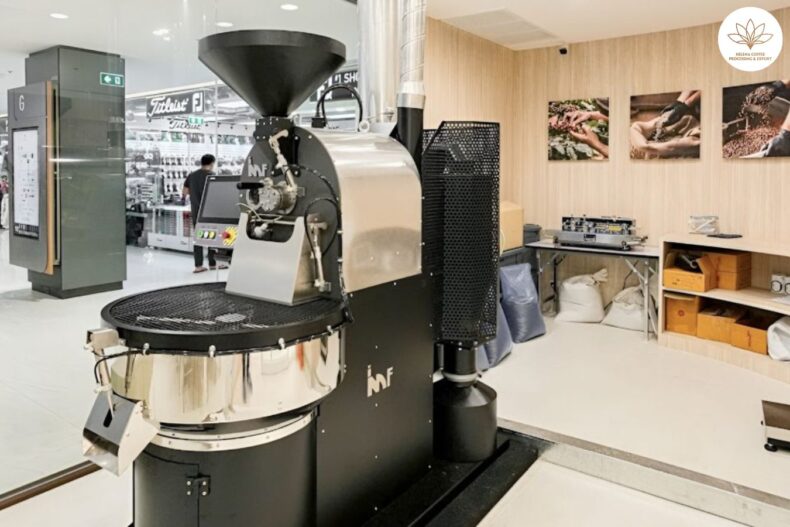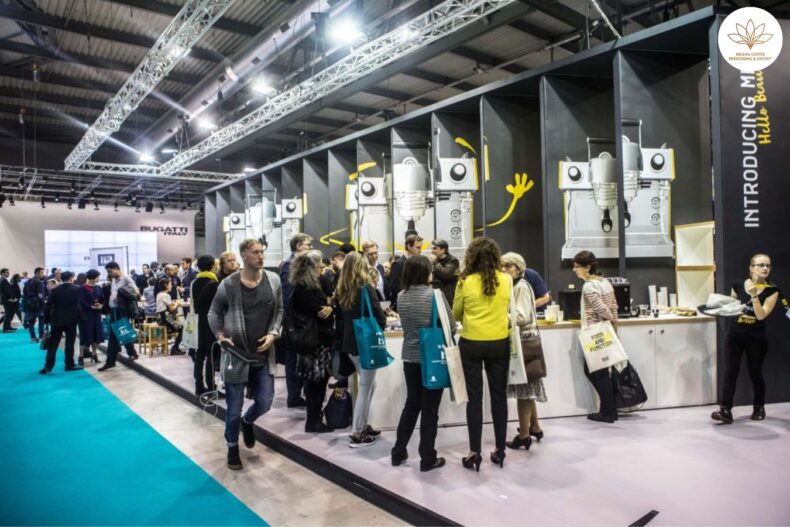
Coffee is one of the most consumed beverages in the world, with millions of people enjoying a cup of coffee every day. Coffee is made from coffee beans, and Robusta coffee beans are among the most popular varieties. Robusta coffee beans have a strong and bold flavor, which makes them a popular choice for coffee lovers worldwide. This article will discuss everything you need to know about Robusta coffee roasting.
What is Robusta Coffee?
Robusta coffee, scientifically known as Coffea canephora, is widely cultivated in West and Central Africa. Robusta coffee beans are known for their strong and bold flavor, which makes them a popular choice for coffee lovers who prefer a fierce and bitter taste.
Characteristics of Robusta Coffee Beans
Robusta coffee beans are known for their distinct characteristics, which make them different from other coffee beans. Some of the critical attributes of Robusta coffee beans are:
- High caffeine content: Robusta coffee beans contain a higher amount of caffeine compared to Arabica coffee beans.
- Strong and bold flavor: Robusta coffee beans have a strong and courageous flavor, which makes them perfect for espresso and other strong coffee beverages.
- Low acidity: Robusta coffee beans have a low acidity level, making them less acidic than Arabica coffee beans.
- Thick crema: Robusta coffee beans produce a thick, creamy crema, perfect for espresso-based drinks.
Robusta vs. Arabica Coffee Beans
Robusta and Arabica coffee beans are the two most popular coffee beans. While Robusta coffee beans are known for their strong and bold flavor, Arabica coffee beans are known for their smooth and sweet taste. Here are some critical differences between Robusta and Arabica coffee beans:
- Flavor: Robusta coffee beans have a strong and bitter flavor, while Arabica coffee beans have a smooth and sweet taste.
- Caffeine content: Robusta coffee beans have a higher caffeine content than Arabica coffee beans.
- Acidity: Arabica coffee beans have a higher acidity than Robusta coffee beans.
- Price: Arabica coffee beans are more expensive compared to Robusta coffee beans.
The Roasting Process of Robusta Coffee Beans
The roasting process of Robusta coffee beans is similar to the roasting process of other coffee beans. However, due to the distinct characteristics of Robusta coffee beans, the roasting process needs to be adjusted accordingly. The roasting process of Robusta coffee beans involves the following steps:
- Sorting: The first step in roasting Robusta coffee beans is to sort them based on their size and quality.
- Cleaning: The Robusta coffee beans are then cleaned to remove dirt, debris, or foreign particles.
- Roasting: The Robusta coffee beans are then roasted to bring out their unique flavor.
Roasting Profile of Robusta Coffee Beans
The roasting profile of Robusta coffee beans can be divided into three main categories: light roast, medium roast, and dark roast.
Robusta coffee beans, known for their bold flavor and high caffeine content, have unique roasting profiles that cater to various coffee enthusiasts’ tastes. These profiles can be categorized into three roast levels: light, medium, and dark.
Light Roast Robusta Coffee Beans
Light roast Robusta coffee beans are roasted for a shorter period, resulting in a light brown color and a mild flavor profile. Light roast Robusta coffee beans have higher acidity and a subtle nutty flavor.
A light roast of Robusta beans is characterized by a more golden brown color, minimal oil on the surface, and a more acidic flavor. This roasting process preserves the original characteristics of the bean, allowing the drinker to experience its natural earthy and nutty notes. The bright acidity and mild body suit those who prefer a delicate and nuanced coffee experience. Light roast Robusta beans are typically roasted to an internal temperature of 356-401°F (180-205°C) right before the first crack.
Robusta beans, to a light roast level, preserve their natural flavors and enhance the coffee’s fruity and floral characteristics. This roasting method retains more of the original caffeine content, making light roast Robusta coffee a more potent choice regarding caffeine levels.
When brewed, light roast Robusta coffee can exhibit a bright and clean taste with a light body. It may also showcase a slight bitterness that is characteristic of Robusta beans. However, it should be noted that light roast Robusta coffee is less common than medium or dark roast Robusta, as the beans’ robust flavor profile often benefits from a more extended roasting process.
In conclusion, light roast Robusta coffee beans offer a unique flavor experience for those who enjoy a brighter and more acidic cup of coffee while still providing the caffeine boost that Robusta beans are known for.
Medium Roast Robusta Coffee Beans
Medium roast Robusta coffee beans are roasted more extended, resulting in a darker brown color and a more robust flavor profile. Medium roast Robusta coffee beans have a balance of acidity and bitterness, with a slightly chocolatey and caramel flavor.
The medium roast is a popular choice among Robusta coffee drinkers, as it balances the bean’s inherent flavors and the roasting process’s influence. The beans exhibit a medium brown color with a slight oil sheen, resulting in a fuller body and more balanced acidity.
Roasting the beans to an internal temperature of 410-428°F (210-220°C) allows for a sweeter and more complex flavor profile, showcasing hints of cocoa, caramel, and toasted nuts. This roast level is often preferred for brewing methods like drip, pour-over, and espresso.
Dark Roast Robusta Coffee Beans
Dark roast Robusta coffee beans are roasted for the most extended time, resulting in a dark brown color and a bold flavor profile. Dark roast Robusta coffee beans have low acidity and a robust and smoky flavor.
Dark roasted Robusta beans have a rich, almost black color with a shiny, oily surface. This roasting level delivers a bold and robust flavor characterized by a pronounced bitterness and a reduced acidity. The dark roast brings out smoky, earthy, and slightly burnt flavors, which mask much of the bean’s original taste.
Typically roasted to an internal temperature of 465-480°F (240-249°C), dark roast Robusta beans are ideal for those who enjoy a strong, intense coffee experience. This roast is often used in espresso blends, as the heavy body and low acidity provide a punchy base for milk-based drinks like lattes and cappuccinos.
In conclusion, the roasting profile of Robusta coffee beans plays a crucial role in determining the brewed coffee’s overall flavor, body, and acidity. By experimenting with different roast levels, coffee enthusiasts can explore a wide range of taste experiences, from the delicate and nuanced flavors of a light roast to the bold and intense character of a dark roast.
Robusta Coffee Roasting Techniques
Several roasting techniques can be used for roasting Robusta coffee beans, including:
- Drum roasting: The most common technique for roasting coffee beans, where the beans are roasted in a rotating drum over a heat source.
- Hot air roasting: The beans are roasted using hot air instead of a heat source, resulting in a more evenly roasted bean.
- Fluid bed roasting: The beans are roasted by suspending them in a hot air stream, allowing for a more uniform roast.
Factors that Affect Robusta Coffee Roasting
Several factors can affect the roasting process of Robusta coffee beans, including:
- Altitude: The altitude at which the coffee beans are grown can affect the flavor profile of the coffee.
- Soil: The soil in which the coffee beans are grown can also affect the flavor profile of the coffee.
- Moisture content: The moisture content of the beans can affect how evenly they roast.
- Roasting temperature: The temperature at which the beans are roasted can affect the flavor profile of the coffee.
Best Practices for Robusta Coffee Roasting
To achieve the best possible flavor profile when roasting Robusta coffee beans, it is essential to follow these best practices:
- Use high-quality beans: Use only high-quality Robusta coffee beans for roasting.
- Adjust the roasting profile: Adjust the roasting shape based on the characteristics of the beans and the desired flavor profile.
- Monitor the roasting process: Monitor the roasting process carefully to ensure that the beans are roasted evenly and not burnt.
- Store the beans correctly: Store the roasted beans in an airtight container in a cool, dry place to preserve their flavor.
Storing Roasted Robusta Coffee Roasting
To maintain the quality and flavor of roasted Robusta coffee beans, it is essential to store them correctly. Here are some best practices for storing roasted Robusta coffee beans:
- Use an airtight container: Store the beans in an airtight container to prevent air, moisture, and light from affecting the flavor.
- Store in a cool, dry place: Store the beans in a cool, dry place away from direct sunlight and heat.
- Do not store in the fridge or freezer: Storing the beans in the refrigerator or freezer can cause condensation, which can affect the flavor of the beans.
Conclusion
Robusta coffee beans are popular for coffee lovers who prefer a strong and bold flavor profile. When roasting Robusta coffee beans, it is essential to consider the unique characteristics of the beans and adjust the roasting shape accordingly to bring out the desired flavor. By following best practices for roasting and storing Robusta coffee beans, you can ensure that you can enjoy a high-quality cup of coffee every time.
FAQs
- Is Robusta coffee more bitter than Arabica coffee?
- Yes, Robusta coffee is known for its strong and bitter flavor, which makes it a popular choice for those who prefer a bold taste.
- Can Robusta coffee be used for espresso?
- Robusta coffee is a popular choice for making espresso due to its strong and bold flavor.
- Is Robusta coffee higher in caffeine than Arabica coffee?
- Yes, Robusta coffee beans contain a higher amount of caffeine compared to Arabica coffee beans.
- How should I store my roasted Robusta coffee beans?
- To maintain the quality and flavor of roasted Robusta coffee beans, it is essential to store them in an airtight container in a cool, dry place away from direct sunlight and heat.
- What factors affect the roasting process of Robusta coffee beans?
- The altitude at which the coffee beans are grown, the soil in which the coffee beans are grown, the moisture content of the beans, and the roasting temperature are all factors that can affect the roasting process of Robusta coffee beans.


